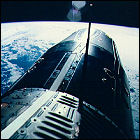 Gemini 9 lifts off on a three-day mission to complete the still unfulfilled docking objectives of the Gemini program. The flight has already seen significant problems, not the least of which is the death of the originally-assigned crew, Elliott See and Charles Bassett, in an accident involving T-38 training jets. The backup crew, Thomas Stafford and Gene Cernan, fly Gemini 9 instead, but find that their rendezvous/docking target is still trapped in the aerodynamic shroud that protected it during launch (the shroud would normally have been jettisoned). Furthermore, a spacewalk has been written into the mission plan, requiring Cernan to leave Gemini and go to the rear of the vehicle to unstow and test a “jetpack” (an early prototype of the Manned Maneuvering Unit that will finally see use in the space shuttle program in the 1980s). The spacewalk becomes a two-hour ordeal which leaves Cernan exhausted, thanks to the lack of handholds on the exterior of the Gemini capsule. The flight ends after three days in space.
Gemini 9 lifts off on a three-day mission to complete the still unfulfilled docking objectives of the Gemini program. The flight has already seen significant problems, not the least of which is the death of the originally-assigned crew, Elliott See and Charles Bassett, in an accident involving T-38 training jets. The backup crew, Thomas Stafford and Gene Cernan, fly Gemini 9 instead, but find that their rendezvous/docking target is still trapped in the aerodynamic shroud that protected it during launch (the shroud would normally have been jettisoned). Furthermore, a spacewalk has been written into the mission plan, requiring Cernan to leave Gemini and go to the rear of the vehicle to unstow and test a “jetpack” (an early prototype of the Manned Maneuvering Unit that will finally see use in the space shuttle program in the 1980s). The spacewalk becomes a two-hour ordeal which leaves Cernan exhausted, thanks to the lack of handholds on the exterior of the Gemini capsule. The flight ends after three days in space.
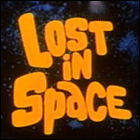 The 26th episode of Irwin Allen’s science fiction series Lost In Space premieres on CBS, starring Guy Williams, June Lockhart, and Jonathan Harris. Werner Klemperer (Hogan’s Heroes) guest stars.
The 26th episode of Irwin Allen’s science fiction series Lost In Space premieres on CBS, starring Guy Williams, June Lockhart, and Jonathan Harris. Werner Klemperer (Hogan’s Heroes) guest stars.
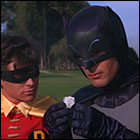 The
The 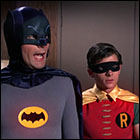 The
The 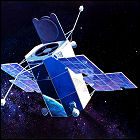 NASA launches its first space-based telescope, the unmanned Orbiting Astronomical Observatory satellite, into Earth orbit. Weighing nearly two tons and sporting visible, ultraviolet, X-ray and gamma ray astronomy capabilities, OAO is in trouble mere minutes after it goes into service: a serious electrical failure leaves the spacecraft in a blind tumble, and it will be declared a loss three days after launch. NASA will attempt another OAO launch in 1968.
NASA launches its first space-based telescope, the unmanned Orbiting Astronomical Observatory satellite, into Earth orbit. Weighing nearly two tons and sporting visible, ultraviolet, X-ray and gamma ray astronomy capabilities, OAO is in trouble mere minutes after it goes into service: a serious electrical failure leaves the spacecraft in a blind tumble, and it will be declared a loss three days after launch. NASA will attempt another OAO launch in 1968.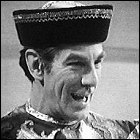 The 112th episode of Doctor Who airs on the BBC. This is part two of the story now collectively known as
The 112th episode of Doctor Who airs on the BBC. This is part two of the story now collectively known as 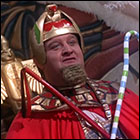 The
The 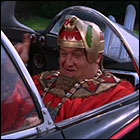 The
The 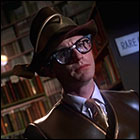 The
The 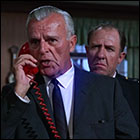 The
The  The
The 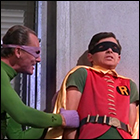 The
The 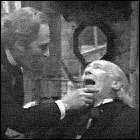 The 115th episode of Doctor Who airs on the BBC. This is part one of the story now collectively known as
The 115th episode of Doctor Who airs on the BBC. This is part one of the story now collectively known as 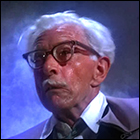 The
The 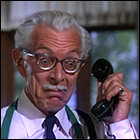 The
The 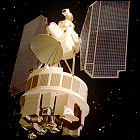 NASA launches the Nimbus 2 satellite, designed to observe weather patterns from orbit and test new weather and climate detection technologies. Nimbus 2’s only means of data storage fails within weeks, and that system’s only backup fails later in the year. Nimbus 2 is shut down in 1969 when the system it uses to maintain orientation to Earth’s horizon also fails.
NASA launches the Nimbus 2 satellite, designed to observe weather patterns from orbit and test new weather and climate detection technologies. Nimbus 2’s only means of data storage fails within weeks, and that system’s only backup fails later in the year. Nimbus 2 is shut down in 1969 when the system it uses to maintain orientation to Earth’s horizon also fails.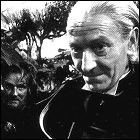 The
The 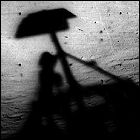 NASA’s first attempt to soft-land an unmanned space probe on another body in the solar system ends with a perfect landing:
NASA’s first attempt to soft-land an unmanned space probe on another body in the solar system ends with a perfect landing:  Gemini 9 lifts off on a three-day mission to complete the still unfulfilled docking objectives of the Gemini program. The flight has already seen significant problems, not the least of which is the death of the originally-assigned crew, Elliott See and Charles Bassett, in an accident involving T-38 training jets. The backup crew, Thomas Stafford and Gene Cernan, fly Gemini 9 instead, but find that their rendezvous/docking target is still trapped in the aerodynamic shroud that protected it during launch (the shroud would normally have been jettisoned). Furthermore, a spacewalk has been written into the mission plan, requiring Cernan to leave Gemini and go to the rear of the vehicle to unstow and test a “jetpack” (an early prototype of the Manned Maneuvering Unit that will finally see use in the space shuttle program in the 1980s). The spacewalk becomes a two-hour ordeal which leaves Cernan exhausted, thanks to the lack of handholds on the exterior of the Gemini capsule. The flight ends after three days in space.
Gemini 9 lifts off on a three-day mission to complete the still unfulfilled docking objectives of the Gemini program. The flight has already seen significant problems, not the least of which is the death of the originally-assigned crew, Elliott See and Charles Bassett, in an accident involving T-38 training jets. The backup crew, Thomas Stafford and Gene Cernan, fly Gemini 9 instead, but find that their rendezvous/docking target is still trapped in the aerodynamic shroud that protected it during launch (the shroud would normally have been jettisoned). Furthermore, a spacewalk has been written into the mission plan, requiring Cernan to leave Gemini and go to the rear of the vehicle to unstow and test a “jetpack” (an early prototype of the Manned Maneuvering Unit that will finally see use in the space shuttle program in the 1980s). The spacewalk becomes a two-hour ordeal which leaves Cernan exhausted, thanks to the lack of handholds on the exterior of the Gemini capsule. The flight ends after three days in space. The first episode of the spy-fi series Adam Adamant Lives! premieres on BBC1, starring Gerald Harper and Juliet Harmer.
The first episode of the spy-fi series Adam Adamant Lives! premieres on BBC1, starring Gerald Harper and Juliet Harmer.